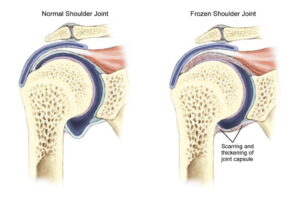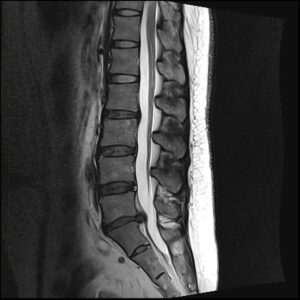Almost one-half of the population of older adults report they deal with either hip or knee pain. Hip pain is debilitating and can lead to loss of work or spending time with loved ones. It can also keep you up at night, reduce mobility, and lead to overusing medications.
Physical therapy is a great tool for hip pain solutions. A qualified physical therapist can use safe and effective strategies for improving your pain and quality of life.
If you have an interest in learning about the seven benefits of physical therapy for hip pain, then keep reading on.
1. Nerve or Musculoskeletal Pain?
Any time you have pain, it is helpful to do a quick assessment. Keep in mind – pain is not always an indicator of how severe an injury is, but it can help give you a good baseline.
For example, is your pain sharp? Does it travel down your legs?
Nerve pain is different from muscle pain. Nerve pain happens when the nerves become pinched or irritated. This often leads to sharp, stabbing pain.
In your hip, it can also present with numbness, tingling, or radiating pain down the leg.
Musculoskeletal pain can be the result of joint or soft tissue damage. These injuries fall under sprains, strains, fractures, and more.
If you have arthritis, you might notice pain when you are standing. You might also have worsening pain with specific movements, or notice it first thing in the morning. Many types of pain can be assessed and diagnosed with physical therapy – even nerve pain.
2. Skilled and Non-Invasive Techniques
Physical therapists are trained healthcare professionals who have completed graduate-level schooling such as the doctoral trained physical therapists in our practice. They are specialized in hands-on techniques for improving mobility and function, while reducing pain for a variety of injuries, illnesses, and diseases.
They use non-invasive approaches that help strengthen and mobilize problematic areas. These professionals utilize different treatments in therapy, such as:
- Joint mobilizations
- Soft tissue manipulation
- Manual therapy
- Dry Needling
- Instrument assisted soft tissue mobilization
- Exercises
- Range-of-motion
- Stretching
- Modalities
Some common types of modalities are things like electrical stimulation, ultrasound, and more.
3. Diagnosing Other Conditions
Hip pain and physical therapy go hand-in-hand. A physical therapist will start with an initial evaluation. During this evaluation, your therapist might test the strength of your muscles, assess your range of motion, or ask you to perform some functional movements.
At this time, you and your physical therapist will talk about where your pain is and what causes it. It helps to have a journal that documents when and how severe your pain is throughout the day.
Physical therapy treatment is often successful in managing musculoskeletal hip conditions without the need for diagnostic testing, however, the therapist may suggest further imaging in certain situations. If you have a fracture, arthritis, or dislocation, it will show up in an X-Ray. MRIs can give a better viewpoint of soft tissues, such as muscles, ligaments, and tendons. X-rays and MRIs can give a clearer picture of the anatomic pathology which can help guide the therapist in determining the appropriate interventions to treat the functional impairments.
4. Lifestyle Changes
Many times, people have hip pain from overuse, arthritis, or bursitis. Overuse of muscles and tendons is what results in tendonitis. This can happen naturally as your body ages, or with repetitive movements at work or home.
Active rest and rehab are both beneficial in treating tendonitis. Physical therapists have training in assessing home set-ups and lifestyles. They can discuss with you different lifestyle or dietary changes you can make that will reduce your chance of flare-ups.
5. Fixing Hip Pain Through Consistency
After your first session, you will likely participate in therapy one to three times a week. These sessions can last for weeks to months which is important in building up strength and reducing your risk of further injury.
During sessions, your therapist can help walk you through different exercises and stretches. Typically, you will start with lighter activities and build up as your muscles become stronger and your pain lessens. Your therapist will work with you one-on-one with manual therapy, modalities, or other techniques that were mentioned earlier.
6. Carry-Over At Home
Hip pain solutions start in physical therapy but carry over in the home environment. Physical therapists are trained in providing skilled interventions in the clinic. It is extremely beneficial to follow the home exercise program that your therapist has created for you.
These programs are safe and easy to do on your own. They may also require little to no equipment. One of the best things to do for hip pain is movement. If weight-bearing is too painful, then look into cycling or aquatic exercise classes, since those activities are easier on your joints.
7. Long-Term Hip Pain Prevention
Pain relief is a critical step in the physical therapy process. However, you don’t want to have to keep addressing your hip pain year after year. For that reason, physical therapy works at hip pain prevention strategies for long-term success.
The reason physical therapy is the bread and butter of rehab is that it can give you the tools for helping in preventing future injuries and pain. They can help you with posture and show you movements that can help you at work, home, or with other hobbies.
Additionally, they might suggest various adaptive or durable medical equipment that can be helpful at home and keep you safe.
Find Your Next Physical Therapy Office
If you have been suffering from hip pain, then you might consider reaching out to a physical therapy clinic. A physical therapist can help reduce your pain and strengthen your hip.
You can learn exercises that you can do at home to prevent future injuries and put you in a position for long-term success. Physical therapists are highly trained professionals that can work with you through various non-invasive techniques to help you get back on your feet.
Contact our office today and schedule an appointment with one of our qualified physical therapists.







